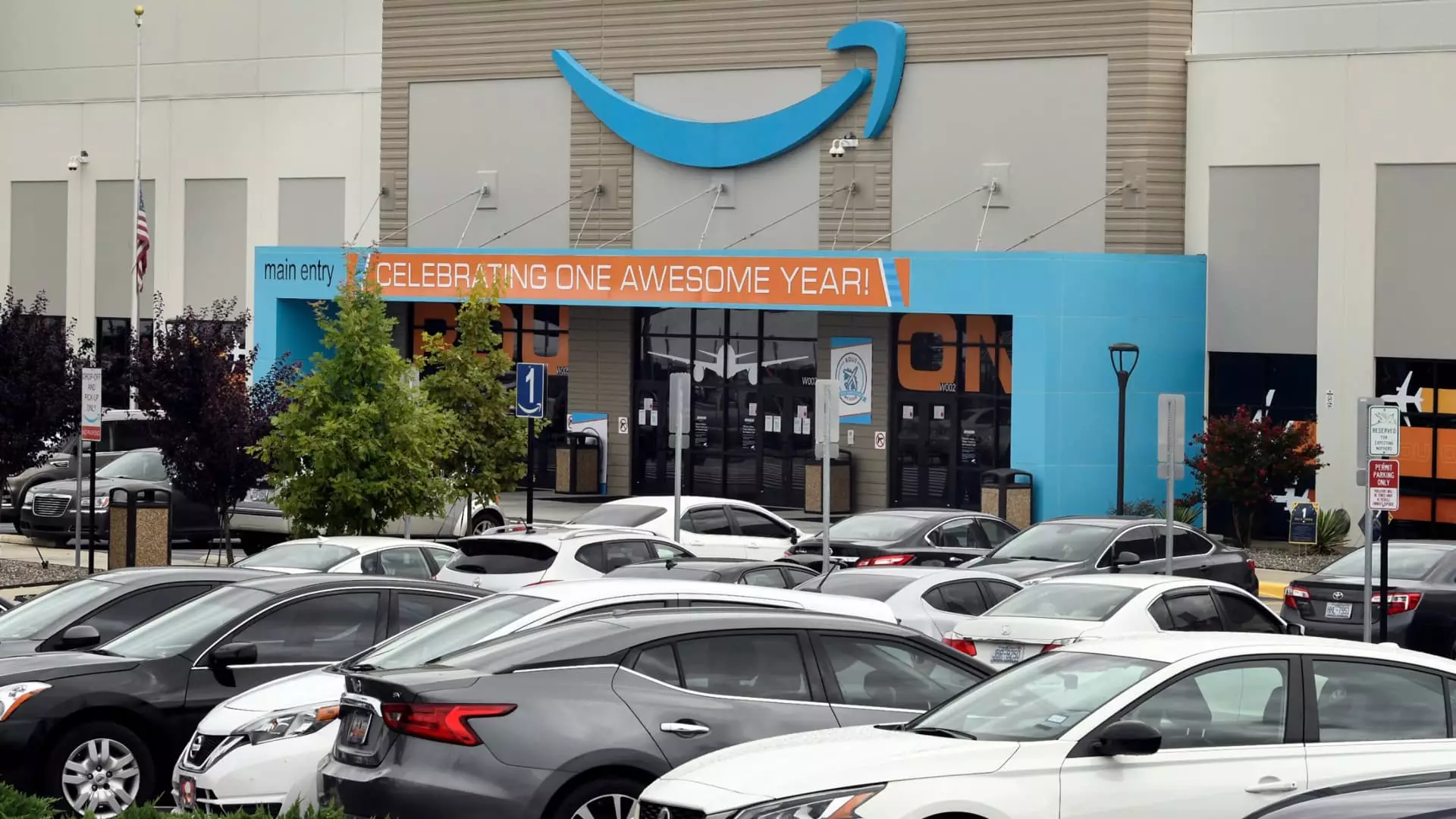In a recent election held at an Amazon facility known as RDU1 in Garner, North Carolina, employees decisively rejected a unionization bid. Out of 3,276 votes cast, a significant majority—2,447—voted against forming a union, leading to an outcome that, at first glance, appears to reinforce Amazon’s staunch anti-union stance. However, beneath the surface lies a complex interplay of corporate power dynamics, worker rights, and ongoing attempts to shift the landscape of labor relations within one of the world’s largest corporations.
The results of the election, which still await official certification by the National Labor Relations Board (NLRB), point to a very structured opposition to unionization at the Amazon facility. The narrow margin of challenging ballots—77—does not provide a pathway for a reconsideration of the decision. The election process was marked by an extensive campaign waged by organizers associated with Carolina Amazonians United for Solidarity and Empowerment (CAUSE), a grassroots group formed to advocate for the rights and interests of Amazon workers at RDU1.
Their mission comes in the wake of broadening labor movements that have begun to gain traction in several Amazon facilities across the country. The situation in Garner, significant as it is in North Carolina—a state with one of the lowest union membership rates in the U.S.—highlights the stiff hurdles faced by labor advocates, who have worked tirelessly over the past three years to voice concerns about wages, break times, and broader workplace issues.
Following the election outcome, Amazon representatives expressed satisfaction with the decision, asserting that the workers chose a more direct relationship with the company, free from union intervention. Amazon’s spokesperson emphasized that the company does not engage in unlawful activities aimed at influencing elections, a claim that stands in stark contrast to statements issued by CAUSE, which accused the retailer of using intimidation tactics to sway worker opinions.
Throughout the campaign, Amazon utilized various channels—large-scale communications within the warehouse, digital messages, and in-app notifications—to convey its anti-union sentiment. Company leaders argued that union involvement could disrupt workplace operations, positioning CAUSE as an “outsider” lacking the understanding necessary for representing employees’ interests. Such tactics reveal a commitment to maintaining a non-union environment, but also raise questions about the company’s transparency in allowing its workers to make informed choices regarding representation.
Cause for Concern: Worker Struggles and Corporate Power
The assertion that “over half of Amazon employees are still struggling with food and housing insecurity” made by CAUSE reflects grave concerns that resonate within the working class. The demand for a living wage—proposed at $30 an hour, well above the current starting pay of $18.50—underscores the significant economic pressures faced by employees. Moreover, the call for longer breaks is indicative of a workforce that, according to reports, is experiencing ongoing fatigue and burnout, issues exacerbated by the demands of fast-paced warehouse work.
Labor unions, despite witnessing a resurgence in public approval—67% support according to Gallup surveys—are still struggling to translate that sentiment into increased membership. The complexity of the union landscape is further illustrated by the recent electoral endeavors at various Amazon sites, such as the successful unionization at a Staten Island warehouse and a Whole Foods store in Philadelphia. Yet, substantial hurdles remain, as Amazon employs counter-strategies designed to ensure the non-union status of most of its workforce.
Looking Ahead: The Future of Labor Organizing
As labor groups explore pathways to support Amazon workers, including facilitating unfair labor practice charges against the corporation, the question of sustainable labor organization remains pressing. The involvement of unions like the International Brotherhood of Teamsters illustrates a growing coalition advocating for Amazon workers’ rights. Events like the coordinated picket at nine warehouses signal that the struggle for comprehensive union representation is far from over.
While CAUSE’s ambitions to revitalize the conversation around workers’ rights face significant opposition, commitment to advocacy efforts could motivate future unionization drives. The commitment from labor activists to tackle issues of economic insecurity demonstrates a broader demand for transformation within the workforce, echoing sentiments widespread among American workers today. As labor movements evolve, the role of collective bargaining could be pivotal in shaping the future of labor relations in major corporations like Amazon.
The events unfolding at Amazon’s RDU1 facility encapsulate a critical junction in the labor movement where employee advocacy, corporate reluctance, and the ongoing battle for rights and representation converge. The implications of this struggle will reverberate far beyond the walls of one warehouse, influencing the broader discourse on labor rights across the United States.

